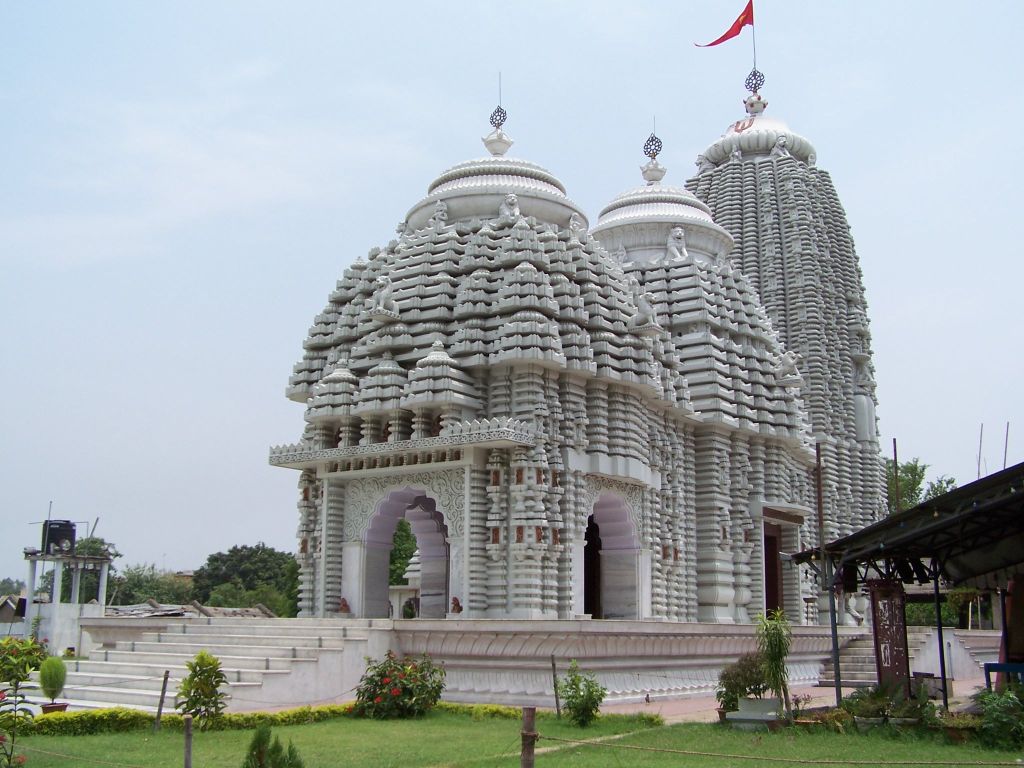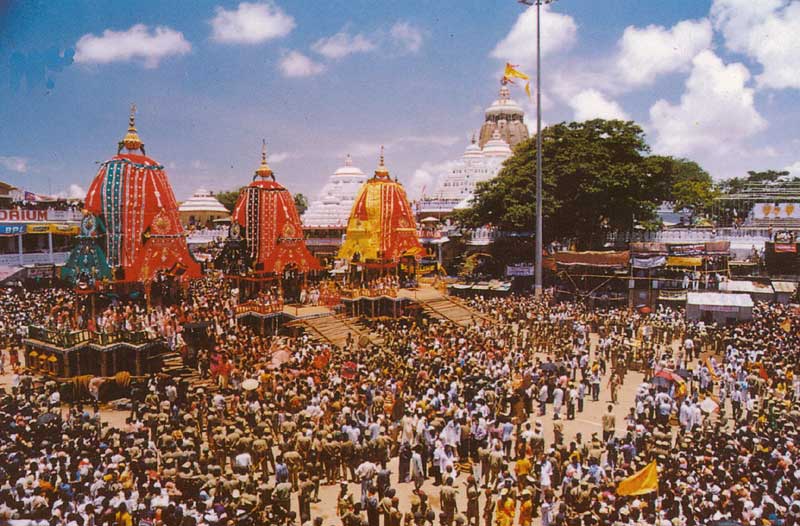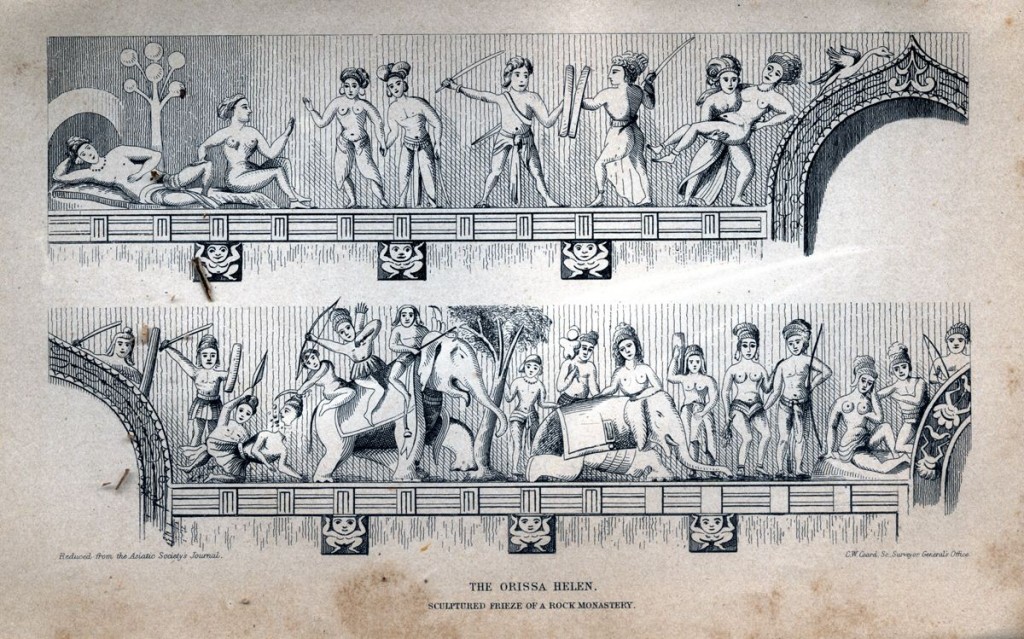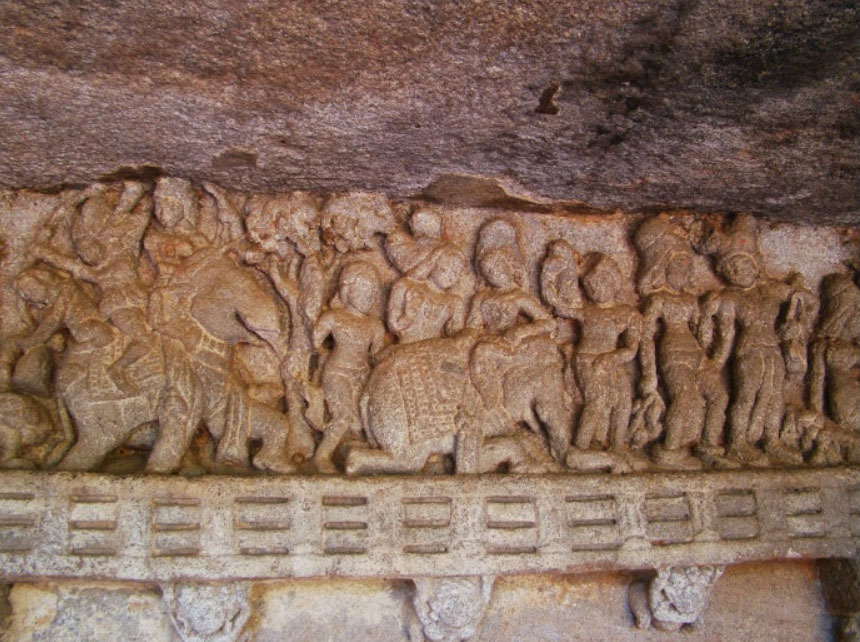JAGANATH TEMPLE ORISSA AND ITS ENVIRONS
AN AMAZING DIFFERENT VERSION OF RAMAYANA
The abduction of Sita as the Orissa Helen

When the British took over India, they found the area of Orissa, the most inhospitable land in India. Filled with mountains and jungles, nobody really wanted to be there. But it did host the world famous pilgrimage point for Hindus, that is the Jaganath Temple, where people from all over India and elsewhere, called with the firm conviction,that all their sins, however bad, would be washed away after bathing in the Temple. And legends galore about the episodes in the history of Orissa.

Around the temple are various caves, housing various relics of olden times. Recorded history just places the temples around 2600 years old. In it are effaced friezes as well as recognizable ones. The Mother Monastery houses the frieze of the Abduction of Sita, and that is one version of it. Another cave known as the GANESHA CAVE carries another version of the same. Surprisingly, although the Hindu ascetics at the cave all talked of it being related to the legend of Ram and Sita, the Sita or the Orissa Helen seems to be completely of different nature. Living with her husband, she is abducted by a LOVER, and instead of the usual return of Sita from the clutches of Ravan in Ceylon, here the version ends with the abductor winning and living happily ever after with her. This is not something we have made, this is something 2500 years old or so, made by ancient Hindus, and is vouched by the Hindu ascetics there as the story of Sita, and yet, Sita seems to be happy with the abductor and the abductor is not an ugly 100 face demon, but a handsome Prince in himself.
The historian has no judgment to pass. The historian has just to observe and relate and keep the facts straight. But this is recorded the Asiatic Society of Bengal as well as the English archaeologist of the 19th century. Narrated by the writer, W.W. Hunter in 1872, as he says about the friezes in the Ganesha cave:

“In the first scene, a lady watches over her husband, who is sleeping under the sacred Buddhist tree. In the second, a suitor makes advances to the lady, who turns her head away. He has seized one hand, and she seems to be in the act of running from him, with her other arm thrown up as if crying for help. The third is the battle. The husband and the lover (or perhaps it is the lady and her suitor) fight with oblong shields and swords. In the fourth, the warrior carries off the vanquished princess in his arms. In the fifth, the successful paramour is flying on an elephant, pursued by soldiers in heavy kilts. The prince draws his bow in the English perpendicular fashion, as in the previous series, and a soldier has cut off the head of one of the pursuers. The sixth is the homecoming. The elephant kneels under a tree, the riders have dismounted, and the lady hang her head, as in shame and sorrow. The seventh represents their home life.
Yes, everyone seems to be happy in end, arms in arms, in full romance This version ridicules the eternal love of Ram and Sita, but the people doing this narration are Hindus, no one else. One fails to understand the intricacies of history and the research points are debated to no end.


Time changes and has no answer for history except questions
A convention on History states that Hindus were least aware of history. Today they are history buffs. Surely the Muslims contributed to their love for history. Truth prevails! But history is manipulated to hide the truth. That is shocking for all.
These comments only show that this person is ignorant, highly prejudiced and totally devoid of any culture. Here discussion is about art, culture and aesthetics not religious biases.
Not something we are saying
Hi Chugtai!
There are many many versions of the Ramayanam. The Tamils have their own ( Kamban, 10th century), so do the UPites ( Tulsi, 16th century) Beyond India ‘s borders, Thailand, Burma, Indonesia, Cambodia and Vietnam knew our magnificent epic well and this epic traveled with Indian culture, art, philosophy, religions, mathematics and languages like Pali and Sanskrit even to Central Asia and China, Korea and Japan in ancient times. But the original one, more than 2000 years old or so, is by Valmiki in the Sanskrit language and in that Ravana is the abductor, and Rama goes to rescue her. Stories are living breathing things that reflect local culture. Purdah culture and had come to North India when Tulsi wrote his version in the 16th century. So in his Hindi one, it’s not a real Sita but a Mayawi (Illusory) Sita who gets abducted. We should celebrate our timeless epics and wonders of India’s classical culture in all their local versions! I assume that’s the point of your post. After all, very few Pakistanis are descendants if at all of Chugtai Turko Mongols, most had Indic ancestry and so they also are legatees of the glories of Indian civilization like the Ramayana.
Brotherly love & best wishes from New Delhi,
Parshu Narayanan
Thank you very much for your views. Much appreciated. Always happy to hear a positive response from our neighbour India. The India of Nehru is perhaps no more, and the Pakistan of Jinnah is no more too. Time travels and changes things. But essentials remain. My father celebrated Hindu Ideology in his own way. You can see that in this blog too.